Ask Ethan: If a substance consists of point particles, why do objects have sizes?
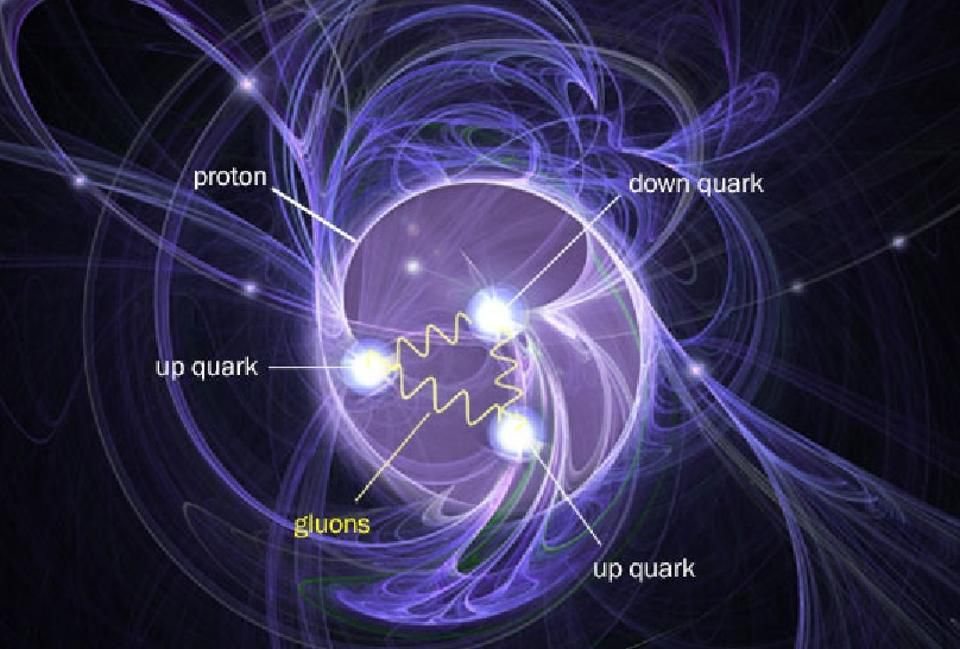
The model of the proton structure together with its inherent fields shows how, despite the fact that it consists of point quarks and gluons, it has a finite and rather large size, arising due to the interaction of its internal quantum forces.
The basic idea of atomic theory is that at the lowest, fundamental level, matter, of which everything consists, after some limit can no longer be divided further. These final building blocks of matter would be literally indivisible, ἄτομος . Going down to smaller and smaller scales, we find that molecules consist of atoms, and those consist of protons, neutrons and electrons, and protons and electrons can be further divided into quarks and gluons. And although it seems that quarks, gluons, electrons and others are point particles, the matter consisting of them has real, finite dimensions. Why it happens? This is what our reader wants to know:
Many sources postulate that quarks are point particles. One might think that the objects consisting of them - neutrons - are also pointlike. What is wrong with my reasoning? Or do they communicate with each other in such a way that the resulting neutron has a certain size?
Let's go to the smallest scale and see what happens there.
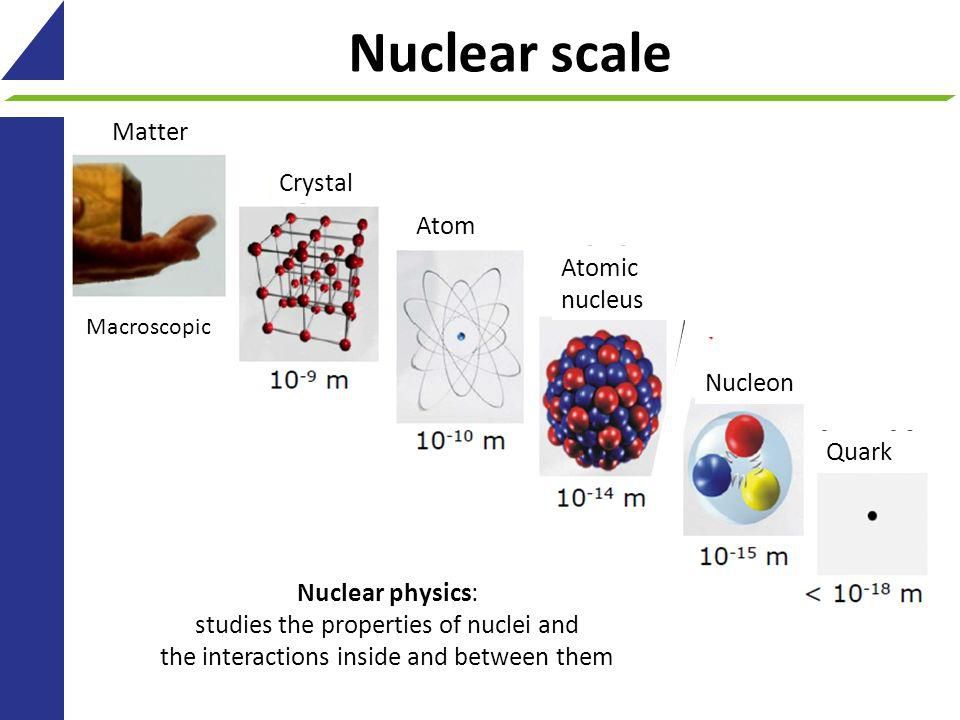
From macroscopic to subatomic scales, the sizes of fundamental particles play only a small role in determining the sizes of composite structures.
On a macroscopic scale, matter behaves as we are accustomed to - and this continues down to the molecular size of the order of a nanometer (10 -9 m). And on a smaller scale, the quantum rules, to which individual particles obey, acquire influence. Atoms with electrons in orbits around nuclei have a size on the order of angstrom: 10 -10 m. The atomic nucleus, consisting of protons and neutrons, is 100,000 times smaller than the atom itself - this is a scale on the order of 10 -15 m. In each individual proton and the neutron are quarks and gluons. And although molecules, atoms, and nuclei have dimensions, the fundamental particles of which they consist — quarks, gluons, and electrons — are considered truly pointlike.
')
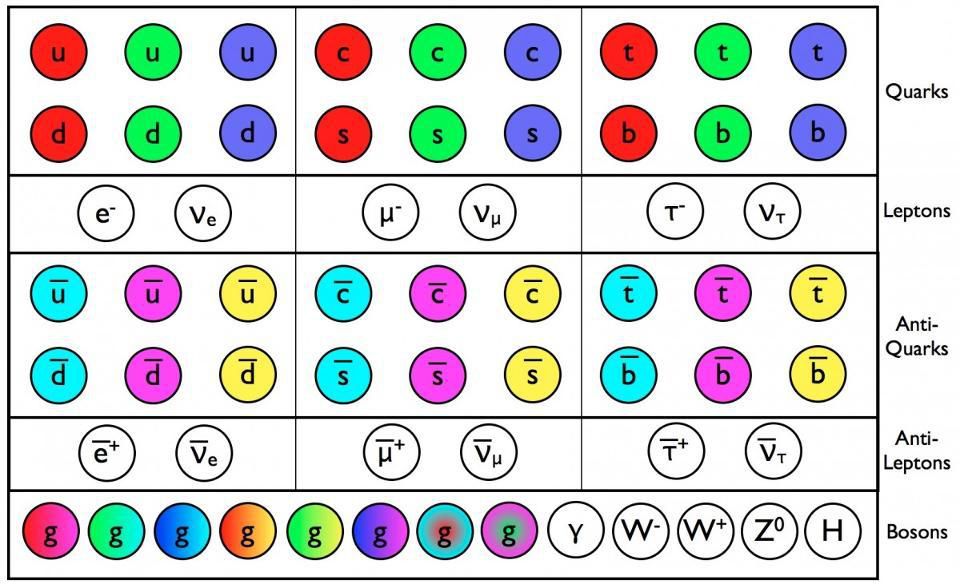
Quarks, antiquarks and gluons in the Standard Model have a color charge, except for all other properties like mass and electric charge. And all these particles, as far as we can judge, are scatter.
We determine the pointlikeness of a particle, simply pushing it away with what is possible at the highest available energies, and looking for evidence of its internal structure. In the quantum world, particles have not only physical size, but also a wavelength determined by their energy. Higher energy - less wavelength, which means that we can probe all the smaller and more complex structures. X-ray energy is enough to probe the structure of atoms, and images obtained through X-ray diffraction and X-ray analysis shed light on how molecules and individual atomic bonds look.
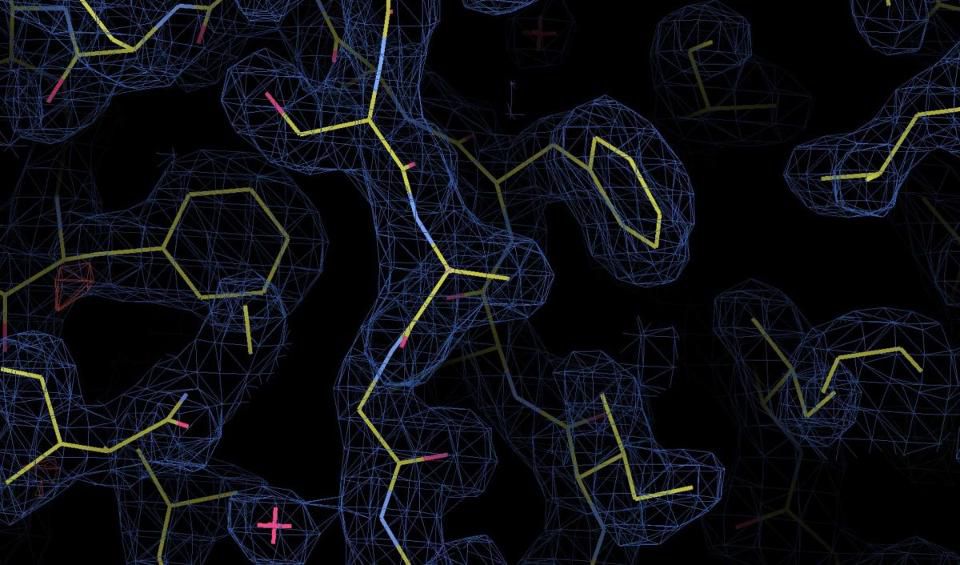
The electron density map in the protein structure, determined by X-ray analysis
At higher energies, you can get a better resolution. Particle accelerators can not only break up atomic nuclei into atoms - deep inelastic scattering allows us to reveal the internal structure of the proton and neutron: quarks and gluons inside them. It is possible that at some point we will find that some of the particles that we consider fundamental consist of even smaller ones. But at the moment, thanks to the energies achieved at the Large Hadron Collider, we know that if quarks, gluons or electrons are not fundamental, their structures should be less than 10 -18 - 10 -19 m. As far as we know, they are in fact point.
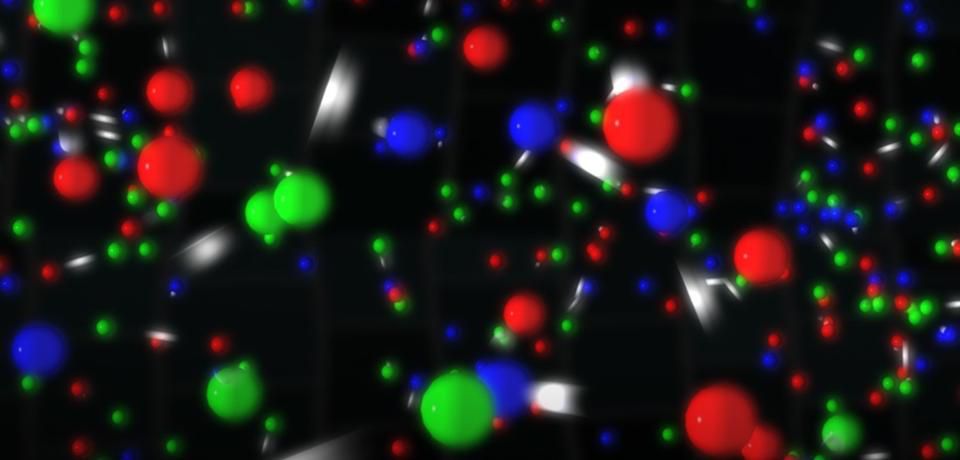
Quark-gluon plasma of the early Universe. Although we often depict quarks, gluons and electrons in the form of three-dimensional spheres, the best measurements available to us tell us that they cannot be distinguished from points.
So how is it that all things consisting of them are larger than points? It's all about the interaction of three things:
- Interactions.
- Particle properties.
- Energy.
The quarks known to us have not only an electric charge, but also (like gluons) a color one . An electric charge can be positive or negative, identical charges repel each other, and opposite charges attract each other. And the interaction of colored charges - strong nuclear interaction - always causes them to attract. And it works very much like a spring.

The internal structure of the proton - shown quarks, gluons, and spin quarks. A strong nuclear interaction works like a spring, its force is negligible in a relaxed state, but it turns out to be large and attracting under tension.
When two objects with colored charges are close together, the force between them drops to zero, like an unstretched spring. When quarks approach each other, electrical forces come into play, and this often leads to mutual repulsion. But when objects with colored charge are far apart, the strong interaction becomes stronger. It, like a tensioned spring, works to tighten the quarks together. Based on the power of the colored charges, the strength of the strong interaction and the electric charges of each quark, we get the size of the proton and neutron - it is the one at which the strong and electromagnetic interaction comes to equilibrium.

Three valence quarks in the proton contribute to its spin, but this is done by gluons, sea quarks and antiquarks, as well as orbital angular momentum. Electrostatic repulsion and attracting strong nuclear interaction together give proton size
On a slightly larger scale, strong nuclear interaction holds protons and neutrons in the atomic nucleus, overcoming the electrostatic repulsion of individual protons. This nuclear interaction is a residual product of a strong nuclear interaction operating at very small distances. Since individual protons and neutrons are neutral in colors, the interaction transfer is carried out by virtual unstable particles, pions, which explains why the nucleus becomes unstable after exceeding certain sizes; It is too difficult for peonies to carry interactions over long distances. Only in neutron stars, the addition of binding gravitational energy suppresses the tendency of nuclei to be rearranged into a more stable configuration.

Separate protons and neutrons of color do not have, but there is a residual strong nuclear interaction between them.
On atomic sizes, the lowest possible energy of an electron bound to a nucleus is not zero, but rather high compared with the rest mass of an electron. This quantum configuration means that the electron needs to jump inside the atom at very high speeds; Although the nucleus and the electron have different charges, the electron cannot collide with the nucleus and calm down. Instead, an electron exists in the form of a certain cloud, rushing and spinning around the nucleus (as well as passing through it) at a distance of almost a million times larger than the size of the nucleus itself.

The energy levels and wave functions of the electron correspond to different states inside the hydrogen atom — although the other atoms will have a very similar configuration. Energy levels are quantized by a multiple of Planck’s constant, but the sizes of orbitals and atoms are determined by the ground state energy and electron mass.
There are several amusing loopholes that allow us to study the variation of these dimensions in extreme conditions. In extremely massive planets, atoms begin to shrink due to enormous gravitational forces, due to which a greater number of them can fit into a smaller volume. For example, the mass of Jupiter is three times the mass of Saturn, but the first is only 20% more than the second. If an electron is replaced in the hydrogen atom by a muon, an unstable electron-like particle, with the same charge but with a mass 206 times larger, the size of the muonic hydrogen atom will be 206 times smaller. The uranium atom is actually larger than the sum of the sizes of individual protons and neutrons due to the long-range action of the electrostatic repulsion of protons compared with the close-acting strong nuclear interaction.

The planets of the solar system to the scale of their true size. The size of Saturn is almost the same as that of Jupiter - but Jupiter is 3 times heavier, which means that its atoms are extremely tightly compressed due to gravitational pressure.
Using various interactions of different forces, you can create a proton, neutron, or another finite-sized hadron from point quarks. By combining protons and neutrons, you can create larger nuclei than the sum of their constituent components. And by tying electrons to the nuclei, you can create a larger structure, all due to the fact that the energy of the ground state of the electron attached to the atom is much greater than zero. To fill the Universe with structures that occupy a finite space and have a nonzero size, you will not need anything other than zero-dimensional point building blocks. Forces, energy and quantum properties inherent in particles will be quite enough for this.
Ethan Siegel - astrophysicist, popularizer of science, blog Starts With A Bang! He wrote the books Beyond The Galaxy , and Treknologiya: Star Trek Science [ Treknology ].
FAQ: if the universe is expanding, why aren't we expanding ; why the age of the universe does not coincide with the radius of the observed part of it .
Source: https://habr.com/ru/post/374297/
All Articles